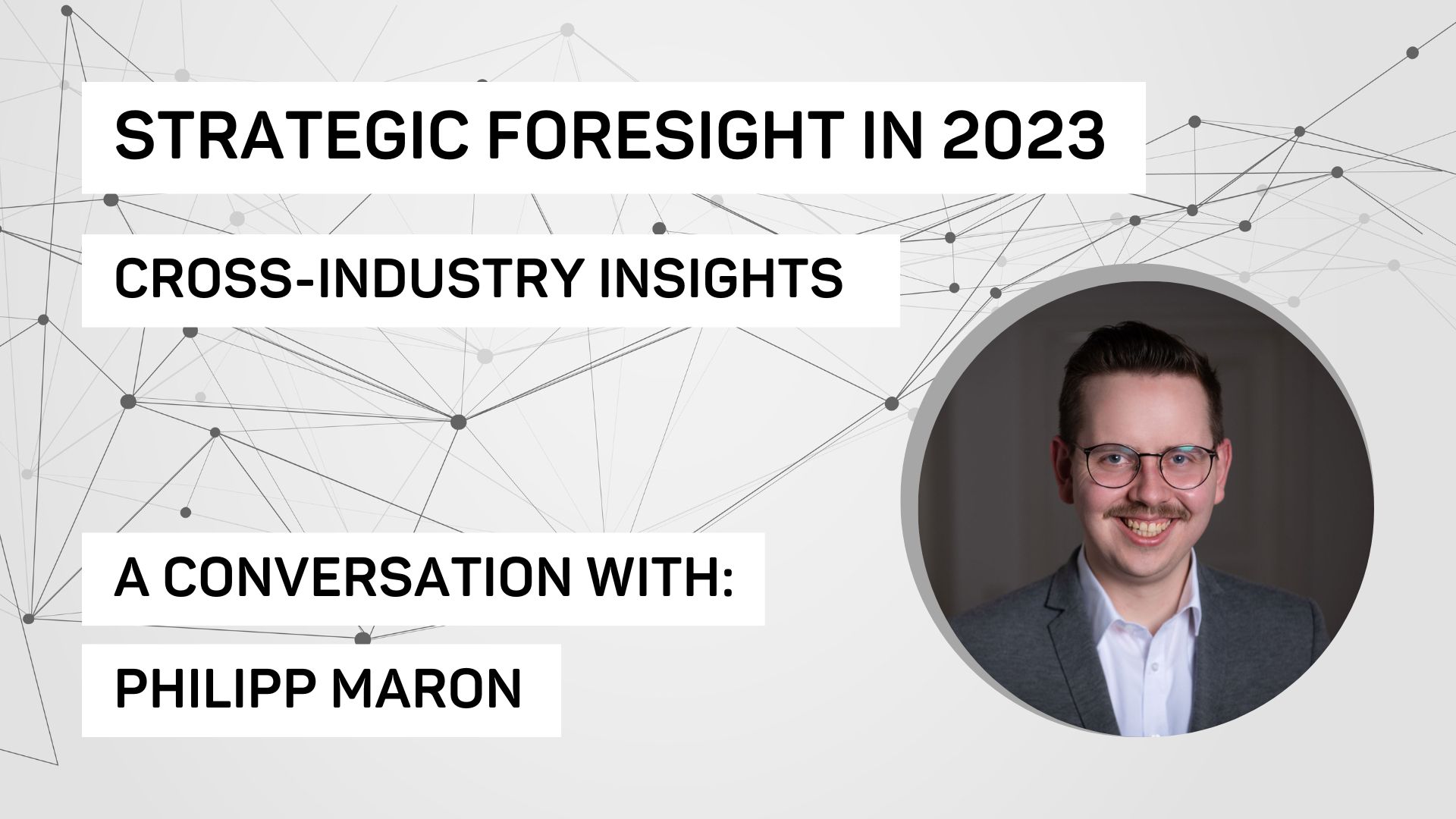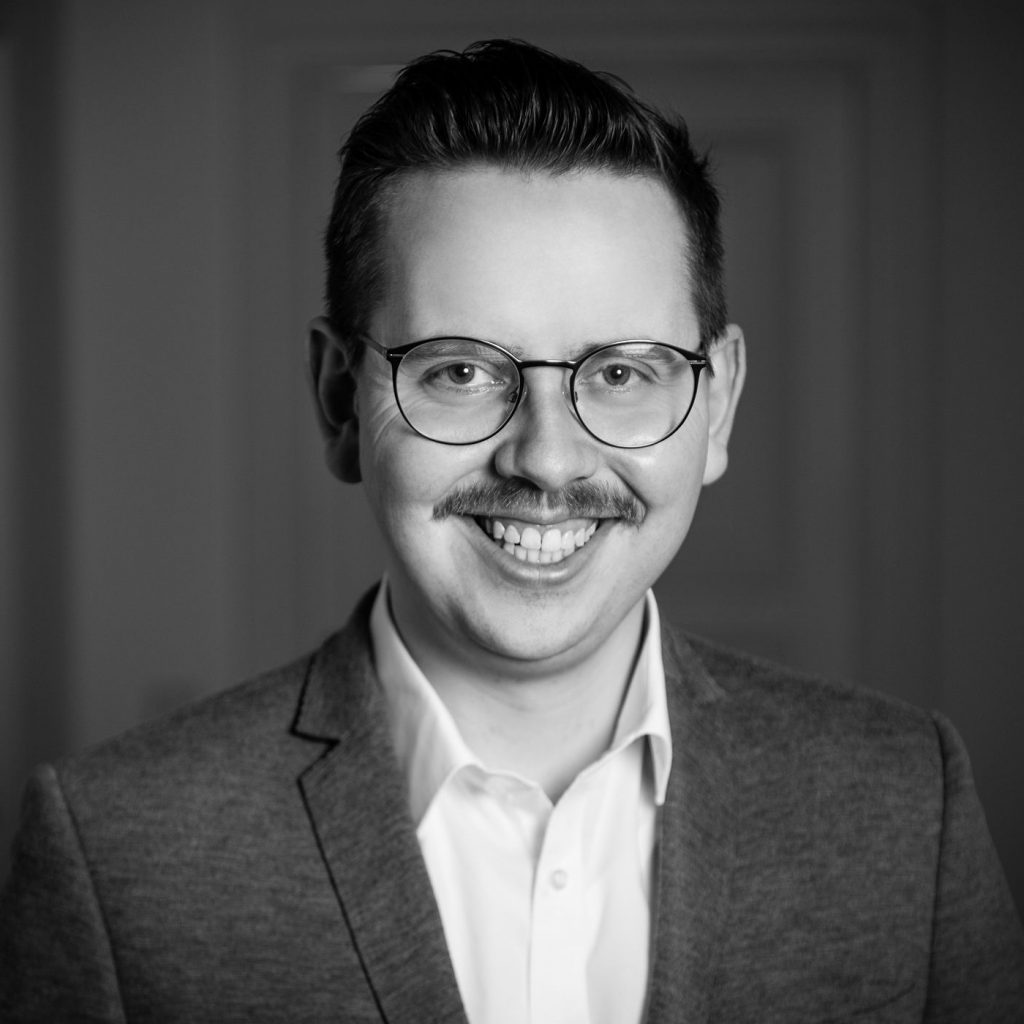
Strategic Foresight in 2023: Cross-industry insights (2/3)
In conversion with Philipp Maron, our strategic foresight expert on what’s set to impact business this year
By Bhavana Sawant and Emily Phillips
Philipp Maron is a Senior Consultant at Rohrbeck Heger. He leads complex projects, overseeing their management, communicating with clients, and ensuring that all deliverables and tasks are performed properly and are of the best quality. Philipp supports his teams as a sounding board and also conducts research interviews to better understand the industries and issues at hand.
We sat down with Philipp and asked him to reflect on his own experiences over the last few months. What commonalities does he observe from client work across multiple industries? What advice would he share for strategy and innovation professionals? What topics and trends will move the world in 2023? And what might the future hold for strategic foresight practice?
Skip to the final part of our three-part series of interviews with one of our experts in the field of foresight and innovation at Rohrbeck Heger.
Tell us about the projects you’ve worked on this past year.
Philipp: My projects are all about foresight-driven innovation: creating future scenarios and using them to derive, explore and understand future customer pain points. Through this we then identify and validate new business opportunities. As we navigate through different projects, we need to ensure that foresight-driven innovation can integrate and align with our clients’ existing innovation and corporate strategy.
I am currently chiefly leading projects with technical clients from industrial and automation environments— the industry leaders in their markets. Quite a few of my projects have focused on the future of intralogistics, specifically what warehouse systems and technology could look like in 2030. I’ve been working in factory automation, exploring future opportunities in the fields of agriculture, greenhouse technology, vertical farming, and asking the question: how will we feed the world in the age of climate crisis, labor shortage, and supply chain issues?
In addition to manufacturing and logistics, my work also focuses on different facets of the mobility industry. A recent project explored the future of electric vehicle battery recycling; currently thousands of batteries are integrated into cars every day, but what are we going to do with these same batteries in 10 to 15 years when it’s time to recycle? And with another client, we’re exploring the future of software-defined vehicles in the automotive industry. For the organizations that are certifying cars, checking for security, and even conducting driver’s license tests: how will their roles change in the next 15 years?
That’s quite a lot of varied projects and industries! What are some common key insights from the mix of projects you’ve worked on?
Philipp: From a content perspective, many of our clients are all facing similar topics and similar uncertainties. For example, the metaverse and the virtualization of services. That’s a topic I’ve encountered two or three times in different versions this year. It’s a thing that people are talking about, but have no clue as to how to effectively use it or rather, make sense of it. So, how does it make sense for an organization? That’s where we step in.
More and more clients today are wanting to gain a better understanding of the future needs of their customers — be it B2C or B2B. This is surely a great indication of a rise in customer-centric design and developments. For the best results, our clients need to listen carefully to consumer inputs.
What has your work this past year shown you about the value of strategic foresight methodology?
Philipp: Scenarios really help people to do a kind of “time travel” and imagine themselves in the future, helping them to think: “What will we need? What do we want to have in place in fifteen years? And in the end, what do we need to do to achieve it?” This is what we call back-casting—a very important and valuable element of our work.
“What will we need? What do we want to have in place in fifteen years?
– Philipp Maron
And in the end, what do we need to do to achieve it?”
In the end, what we want to do is create opportunities that are robust and will work in different alternative futures. For this, the whole topic of opportunity assessment is absolutely crucial and is becoming more and more critical. Clients want to conduct more data-driven and evidence-based decision making. This creates a higher degree of complexity, but if conducted properly, it also creates a lot of trust. Then, when clients are really convinced that this is the right opportunity to pursue, they can push this internally. It’s easier to convince other stakeholders, and in the end, really realize what we have created together.
What advice would you give your clients as they head into 2023?
Philipp: I would advise clients to trust the process. We are well aware of those feelings of uncertainty and lack of trustworthiness. We’ve learned this year that our process comes with a special complexity due to several levels of abstract information. So sometimes it feels like, “It all sounds so complex, and I don’t have a clue where this is headed.” But this is not the first time we have done this. Trying to manage uncertainty can feel like steering a small boat in the vastness of the ocean. Nevertheless, so far, we have always reached the harbor safely. We know what kind of challenges are coming, we’re trying to do our best to help you through. And we also know that in the end, interesting and surprising results are coming out of it. So it really helps to say, “Let’s trust the process.”
“Trying to manage uncertainty can feel like steering a small boat in
– Philipp Maron
the vastness of the ocean. Nevertheless, so far,
we have always reached the harbor safely.”
What does it look like when you trust the process?
Philipp: During one of the workshops this year we had a moment when a key stakeholder said, “I’m going to kill this scenario because I think it’s rubbish and it’s not going to happen in the end.” But then, during our process, we shared some examples as inspiration that could guide us into this future direction. And the stakeholder was so surprised that (in this case) a particular AI capability already exists, that he relented, admitting: “If this has all developed in just the last two years, and we’re thinking 15 years ahead, what else could be possible?” Afterwards he told us, “Okay, sometimes we just need to trust the process and see where it’s heading.”
How do you see strategic foresight evolving in the coming years?
Philipp: I personally hope that the strategic foresight approach gains significant attention in the next few years. We all recognize that the times we are living in are more dynamic than ever. A lot is changing, and no one person can say for sure how all these changes and developments—in China, in the US, in Europe, etc.—will look in the end. But exploring the big picture and opening up our minds to assess plausible futures is powerful, made even more so when you leverage data. What will the big picture be, and how will this shape our everyday life? Asking these questions are key for future success. The whole topic of being more aware of uncertainty and trying to somehow manage uncertainty will become more and more important for all kinds of organizations, from governments to industry to B2C service providers.
“Exploring the big picture and opening up our minds to assess plausible futures is powerful, made even more so when you leverage data.”
– Philipp Maron
Whether the industry is factory automation, intralogistics, or vertical farming, strategic foresight helps organizations prepare for an uncertain future by building resilient, robust strategies. The Rohrbeck Heger team is prepared to guide innovation and strategy teams to assess the complexity of many interwoven trends, from increasing regulations, to a focus on health and well-being, to AI and other technological shifts. Reach out to Philipp to learn more.
Head over to our third and final part of our interview series to learn more on what it’s like to develop moonshots for a multi-national company with our Senior Consultant, Bram Roosens.
The interviews have been edited and condensed for clarity.

Your contact at Rohrbeck Heger:
Philipp Maron
Senior Consultant
pmaron@rohrbeckheger.com
LinkedIn
